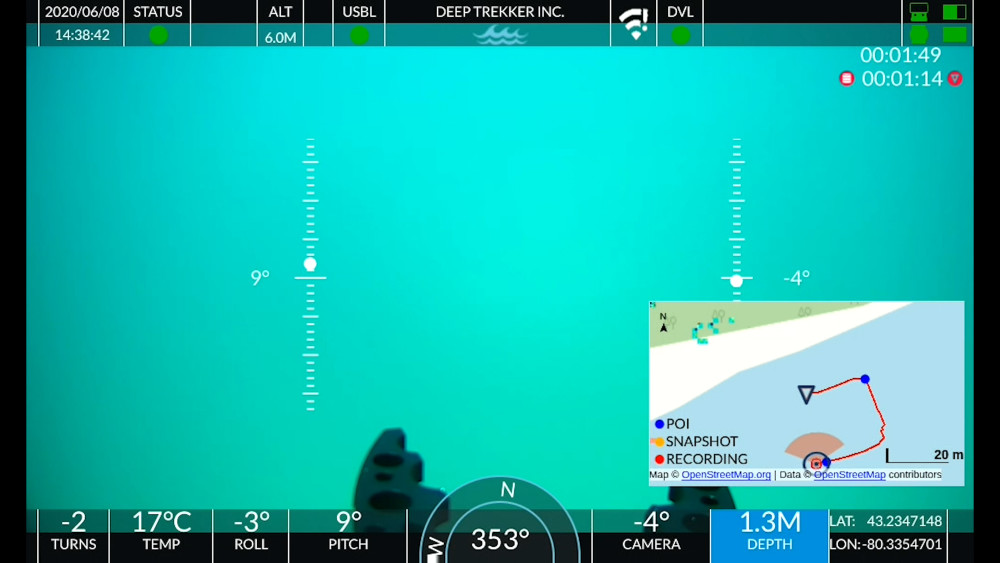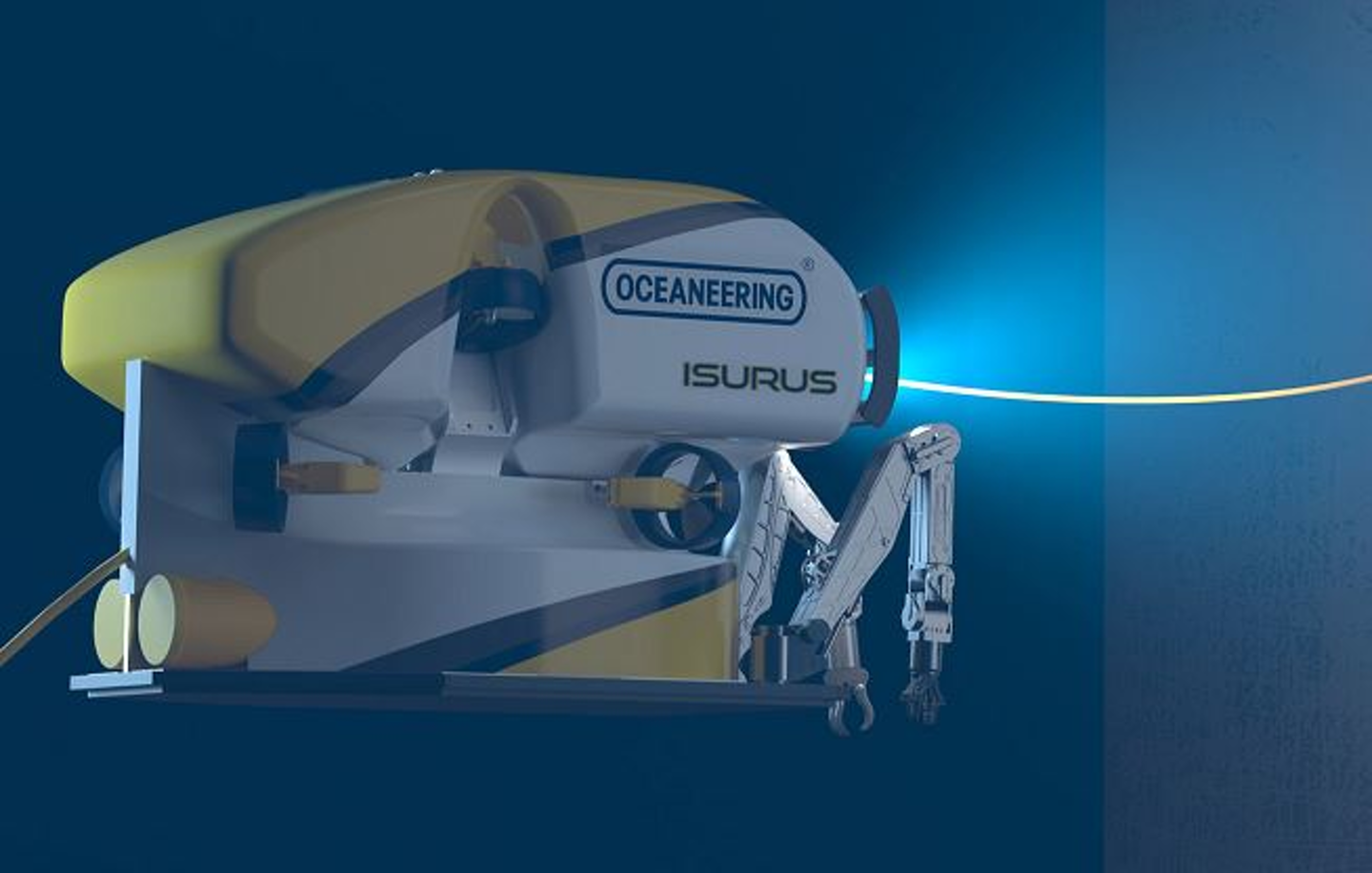Home › Forums › ROV › ROV Technical Discussions › RHL Thruster motors…closed or open loop hydraulic circut
- This topic has 22 replies, 11 voices, and was last updated 17 years ago by
oil_based.
-
AuthorPosts
-
February 18, 2007 at 3:53 am #542
rovbionic
ParticipantCurrently working with new 250 HP (yea right) Innovator which has RHL thrusters with open loop hydraulic setup.
What is best way to describe the diference in RHL thrusters with closed loop as Perry Slingsby MRV’s on Deep Blue.
Pro’s and cons?
February 18, 2007 at 11:13 am #10281Ray Shields
ParticipantWith the Slingsby way of controlling the thrusters, the use of hydraulic power is more efficient.
However, it is also more complex.
With their system, pressure and return is always pressure and return. Supply is via one isolate valve which allows thrusters to be switched off (no tickover).
With a standard control system the entire hydraulic flow has to pass thrugh the servo valve, generating heat, losing power and meaning you need larger valves.
Their control system consists of a small Moog servo which operates the swash piston at the back of the thruster. By varying the angle of the swash plate you can vary the speed and direction of the thruster.
To monitor the position of the swash there is a pot housing containing a 5k pot with +/-5V across it. As the swash piston moves in or out, the voltage varies between approx. +1 and -1V. This voltage is fed back to the Surface Computer so that it knows the exact position of the swashplate.
The characteristics of the RHL with whatever prop you have fitted are stored in the Computer, therefore it knows exactly what the swash angle should be to produce, say, 100kg of thrust. It then sends a command to the moog to drive the piston to the correct position. When it reaches there, it stops it. It constantly monitors the swash voltage and if it deviates it will drive the moog againto correct (closed loop).
The downside is, break the loop and your thruster goes full one way! Lose the feedback, water in the feedback connector, sticky moog, pot breaking down etc. and off it goes.
Hope this helps.
cheers, Ray
February 18, 2007 at 1:14 pm #10282rovbionic
ParticipantThanks heaps Ray.
Even the ET’s here could not explain it as good.
This proto type 250 HP is running 17 inch axial thrusters….. …the yanks have 100% hard plumbed all the thrusters…..100%!!
Vibration is upseting sensors etc. I bet….but the engineers have their own ideas here…..quite a lovely job of bent tubing!!
Working PSI is over 4000psi……makes for dramatics when one of the shop lads forgets to put drain plugs back in…"In Coming"!!
February 18, 2007 at 3:06 pm #10283Ray Shields
ParticipantNo probs.
I like the idea however there are far more efficient thrusters about nowadays, like the Sub Atlantic ones for example. This design has been about for almost 15 years now.
February 19, 2007 at 12:00 am #10284James McLauchlan
ParticipantNo probs.
I like the idea however there are far more efficient thrusters about nowadays, like the Sub Atlantic ones for example. This design has been about for almost 15 years now.
I’ll go with Ray on that.. Sub Atlantics have a lot going for them.. reliability being one advanatge for a start.
February 19, 2007 at 4:53 am #10285rovbionic
ParticipantFunny you should mention Sub Atlantic thrusters.
Poped into Oceaneering for a vist and they are using them on all their new builds.
March 16, 2007 at 6:16 pm #10286Horris
ParticipantGlad to hear the SA thrusters have a reputation for reliability.
They have been fitted as the 7-off thrusters of choice on the new FCV…By the way, anybody have any comments on the the fitting of 2 pumps driven form the main HPU. 1-off solely for the use of the thrusters and T4, 1-off solely for the Solenoid Valve pack which is used to drive the Grabber and any tooling functions.
I have heard good and bad reports of mounting pumps back-to-back driven from 1-off Motor. Reliability issues ??March 16, 2007 at 6:35 pm #10287Ray Shields
ParticipantBy the way, anybody have any comments on the the fitting of 2 pumps driven form the main HPU. 1-off solely for the use of the thrusters and T4, 1-off solely for the Solenoid Valve pack which is used to drive the Grabber and any tooling functions.
I have heard good and bad reports of mounting pumps back-to-back driven from 1-off Motor. Reliability issues ??They used to do that with Hydrovision Sea Demons back in the mid 90’s. Dont remember any particular reliability problems.
October 17, 2007 at 8:10 pm #10288matt buxton
ParticipantAfter reading the posts about thruster designs. got to the part about two pump on one motor………hmmmm
Almost most every single excavator built in the last 30 years has run two pumps off the same diesel motor. One is usually dedicated to the tracks and the machines swing function and the other is dedicated to the boom functions. Sometimes they are arranged differently, but the main goal is to allow for multifunctioning capability. So that when you use one function the other functions don’t lose power or speed. The pumps are mounted to the motor via a splitter box, which is just a gearbox which provides two outputs from one input.
Thinking that if you had the room/bouyancy and the need for lots of hydraulic flow to tooling while using lots of thruster power this might be the way to go.
November 23, 2007 at 12:34 am #10289Ray Shields
ParticipantTwo pumps off one motor is one thing. Unfortunately, they appear to have gone for FIVE pumps run off one electric motor for the FCV deck power pack!
And the pack is about 2/3 the size of a container…
November 23, 2007 at 5:52 am #10290luckyjim37
ParticipantThe SMD Quantum vehicles are now running two pumps off one motor as well and that works ok.
Some of the Trenchings systems used to have multiple service pumps off the sumo motors for all kinds of stuff. This is not that uncommon.
Speaking of thrusters I have been working with curvtech thrusters of late and they seem to be fairly bullet proof as well.
Also SMD Quasar compact vehicles have all the nice shiney hard piping on which is fantastic untill you have to tighten up a fitting on the back of the TCU. Sounds easy until you realise the bouyancy has to be removed to achieve this. 1 fitting 6 hours work……….nice.
December 3, 2007 at 1:35 pm #10291rovnumpty
ParticipantJust to go off at a tangent here
Does anyone outhere think you need 250hp on a work class ROV?
December 3, 2007 at 3:37 pm #10292rover37
ParticipantI cant see the point of all those horses for a standard ROV.
It can only be to power a big skid of some sort. The only skid to require that kind of HP would have to be trenching or perhaps a big jetter.
If its purely ROV it would be rather on the large side to require all that power, something about the size of a U Boat. Trouble is it would be to big to be any use. The size ratio would mean a lot of the power would be taken up fighting currents against the tennis court size piece of buoyancy.
How about trans ocean pipeline survey!! Still seems a waste. Probably a marketing gimmick.December 3, 2007 at 4:23 pm #10293marley
ParticipantHi all, noticed that it seems everyone has a hand with SA thrusters. We are haveing an issue keeping the thruster prop lock nuts tight on our SA380 and Sa300 thrusters. We have tried nylocks, castleheads and now a Philidis nut none seems to work. Any ideas.
December 3, 2007 at 4:55 pm #10294rovbionic
ParticipantWe are running the SA300 for verts on the new Schilling Acergy subs and although this is the first 60 days of ops for them…no prohat exactly are you experiencing and what motor is paired with them?
-
AuthorPosts
- You must be logged in to reply to this topic.



